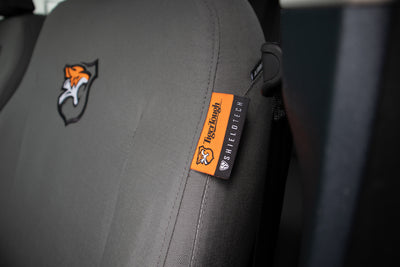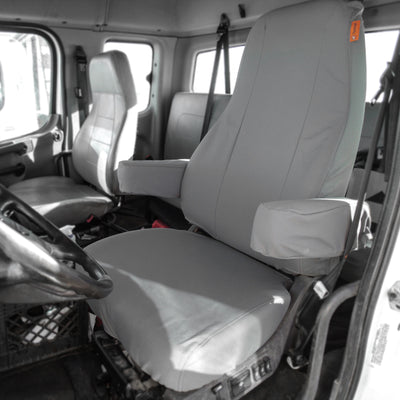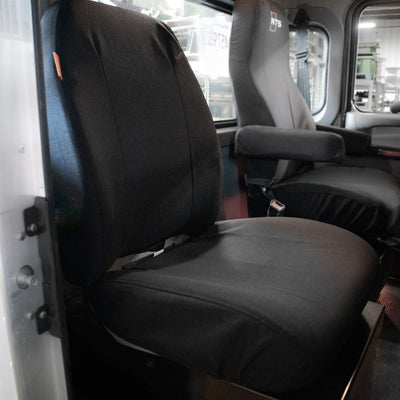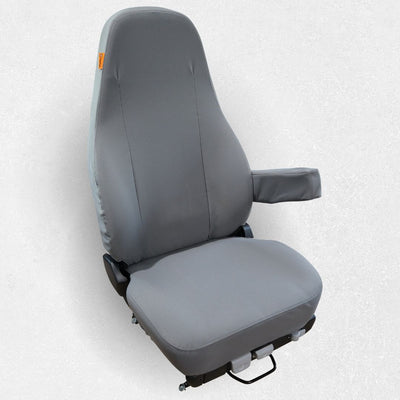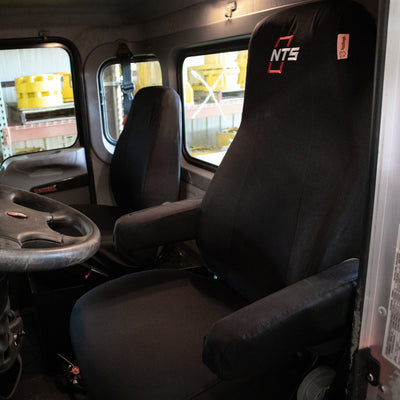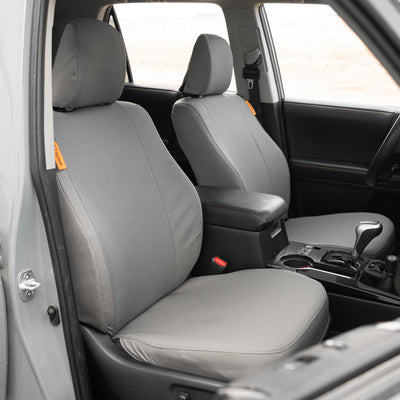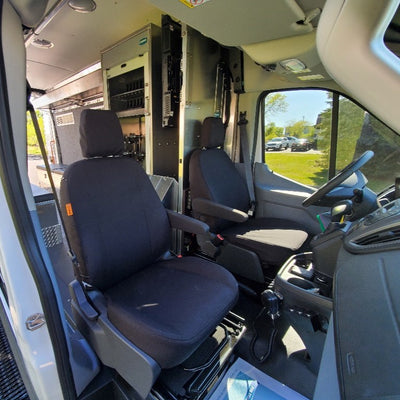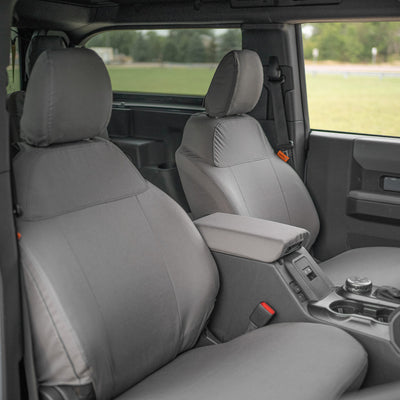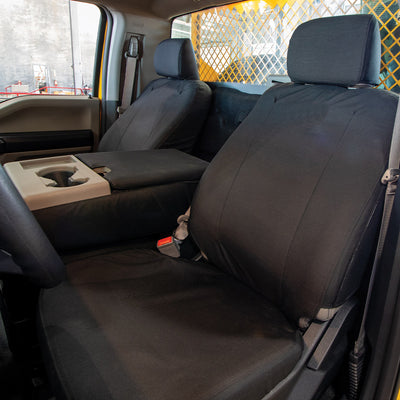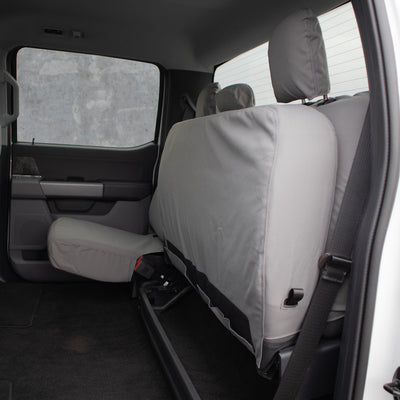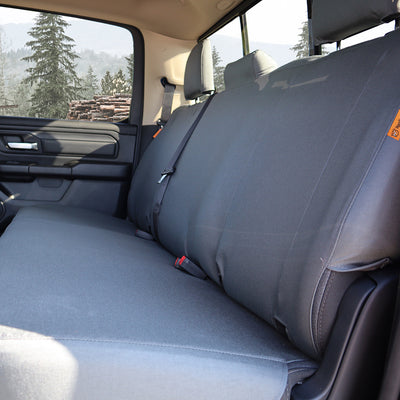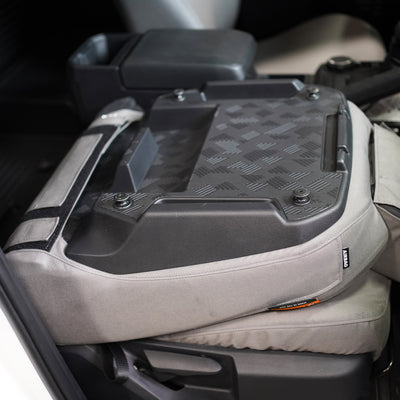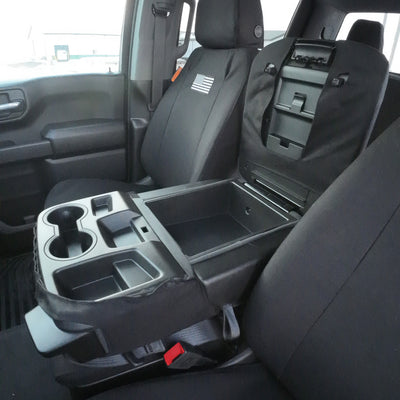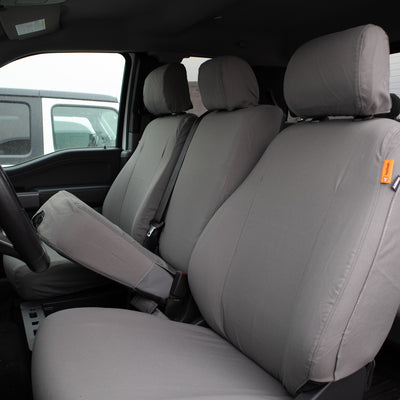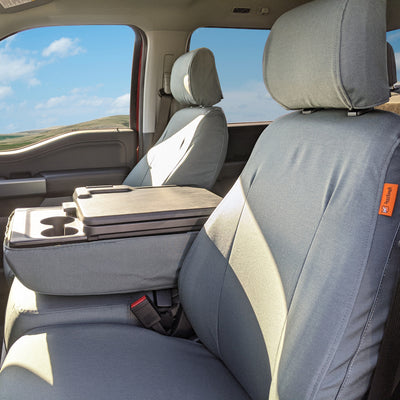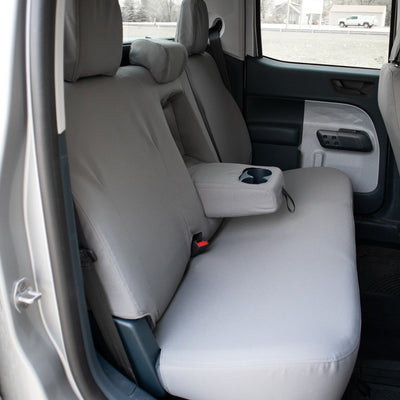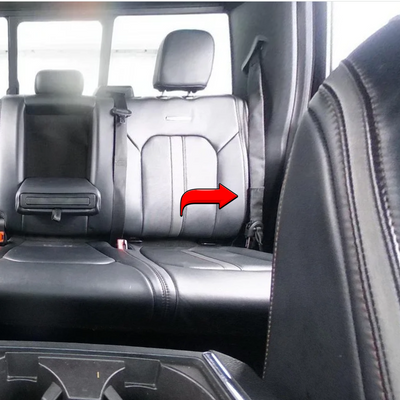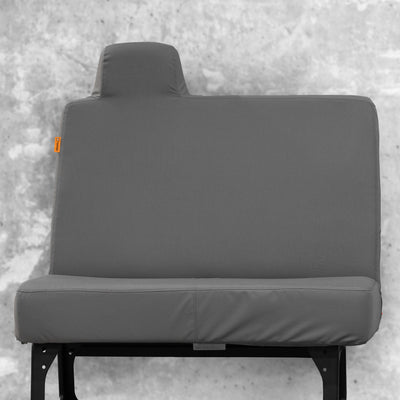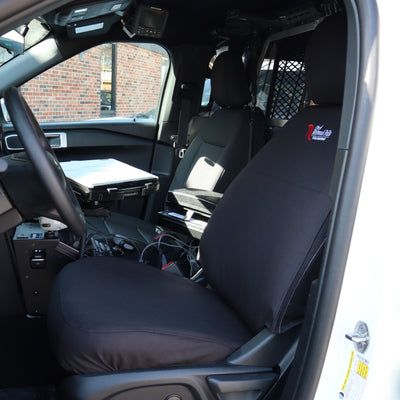Are neoprene seat covers good?
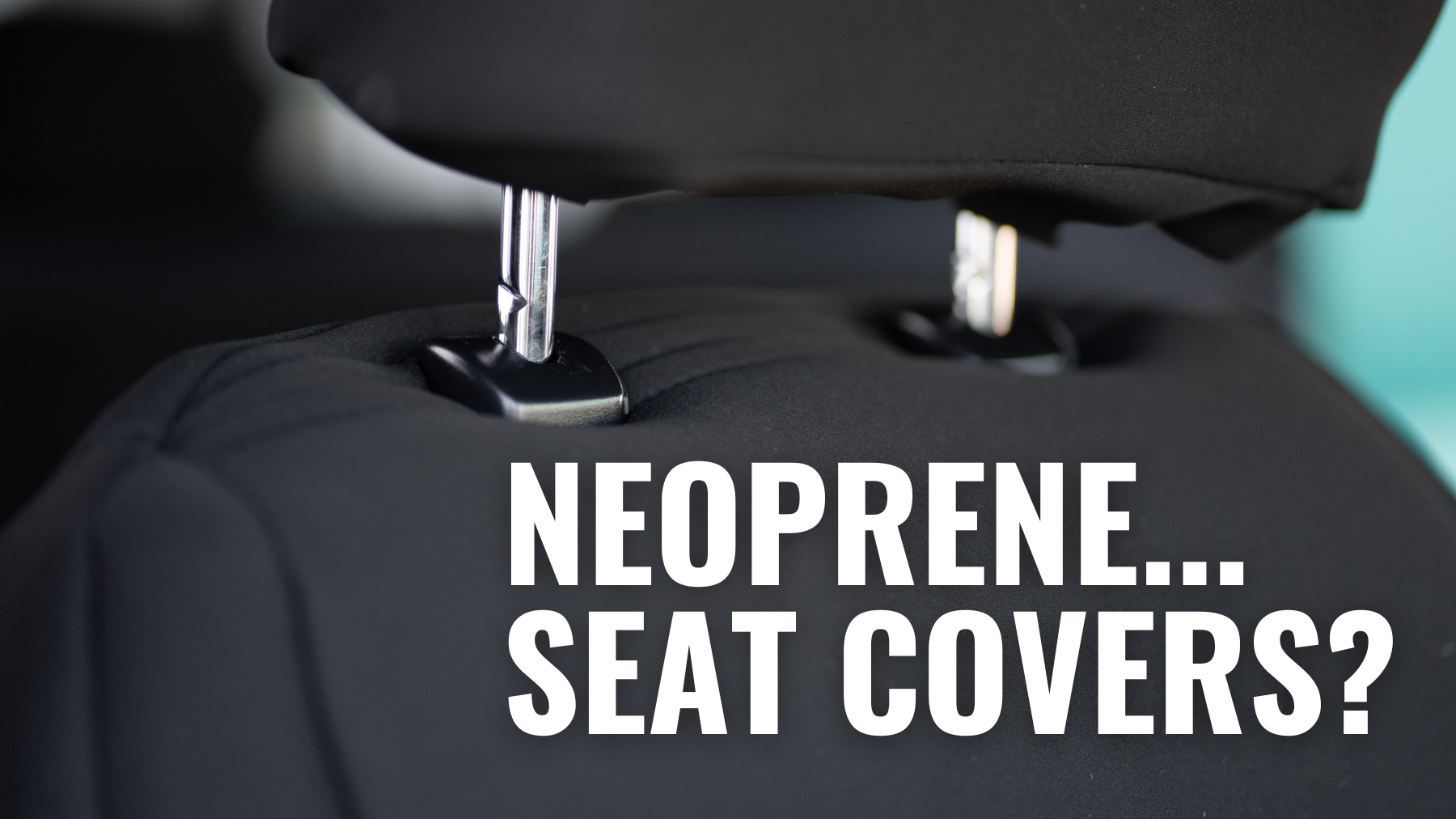
Popular among outdoor enthusiasts, pet owners, and anyone who’s ever spilled coffee during a bumpy commute, neoprene seat covers have carved out a niche in the automotive world.
So, are neoprene seat covers good? Yes, but they aren’t your run-of-mill seat cover, and you need to set your expectations.
Here at TigerTough, while we don’t sell neoprene covers, we appreciate that they’re favorites for people. So, let’s dive into what makes neoprene tick and talk about its pros and cons. Whether you’re considering outfitting your ride with these covers or just curious about them, we’re here to spill the beans (not the coffee!) and help you set the right expectations.
Cleaning and Maintenance
Alright, let’s talk shop about keeping those neoprene seat covers clean. These aren't your regular throw-in-the-wash-and-forget-about-it type of seat covers. Nope, neoprene needs a bit more elbow grease, but it's nothing you can't handle.
Here’s how you clean neoprene seat covers:
- Pull 'Em Off: First up, yank those covers off the seats. It’s straightforward, but give it some muscle—it's good for the arms.
- Prepare Your Cleaning Solution: Mix water with a small amount of wetsuit shampoo. This special shampoo is designed to clean neoprene while also conditioning it, which helps keep the material supple and the colors vibrant. This prevents the material from degrading.
- Use the Right Tools: Grab a lint-free cloth for washing. Apply the soapy water mixture generously to the seat covers, paying extra attention to any spots with stains or heavy soiling.
- Gentle Technique: Avoid using a brush or any harsh tools that could damage the neoprene. Similarly, stay away from harsh detergents, especially those containing bleach. These can degrade the neoprene material quickly.
- Rinse and Dry: Rinse off all that soap. Make sure you get it all out, 'cause leftover suds pull dirt right back. Hang them up to dry but keep 'em out of direct sunlight to avoid fading.
- Rinse Thoroughly: After scrubbing, rinse the seat covers with fresh water to remove any soap residue, which can attract more dirt if left behind.
- Dry Properly: Towel dry the seat covers to remove excess water. Allow them to air dry completely but keep them out of direct sunlight to prevent fading and deterioration of the neoprene.
Yes, they’re a little high-maintenance. And if you've got a mud-magnet dog hopping in your tuck, have fun frequently washing these. But by following these steps, you can ensure that your neoprene seat covers stay clean and in great condition, ready to face whatever comes their way. Remember, the more you wash them using the correct methods, the longer they’ll last. But if you don’t want to take our word for it, Wet Okole’s care instructions literally say, “Washing your Wet Okole Hawaii seat covers will ultimately extend the life of your seat covers.”
Water Resistance vs. Water Retention
Neoprene seat covers are like a wetsuit. They’ll keep you dry, but they hold the water. They're stellar at making sure a spilled coffee or a bit of rain doesn't soak into your truck's seats, but there's a catch.
Here's the lowdown on neoprene:
- Neoprene does a bang-up job at protecting your seats from spills and splashes. This means less worry about water damage on your seats.
- Just like a wetsuit, neoprene hangs onto moisture. Spill something on it, and while your seat underneath stays dry, the cover itself might feel soggy. If you've ever sat back down in a wet swimsuit, you know the drill—it's not the best feeling. It’s a bit like a diaper for your seat.
Managing moist mishaps:
- Spilled something? Grab a towel and dab at the spill quickly. The faster you soak up the liquid from the cover, the less soggy it’ll feel.
- Let the covers air out a bit before you hit the road again if you can. If the weather’s good, crack a window or two to help dry things off faster.
We tested this when we reviewed Wet Okole’s seat covers and they definitely hold water, but protect the seat.
Compatibility with Seat Features
When outfitting your truck with seat covers, not all materials play nice with the fancy features. Neoprene, for instance, can be a bit of a double-edged sword if your truck's got heated or cooled seats.
Here’s the scoop on neoprene and seat features:
- Cooling features: Got cooled seats? Neoprene might just rain on your parade. Since it’s designed to insulate (think wetsuits), it can block those cool breezes from reaching you. That means during those hot summer days, you might not feel quite the relief you’re expecting from that fancy feature.
- Heating features: And as for heated seats, while neoprene won’t stop the heat entirely, it can definitely take a bit longer for you to feel the warmth and you won't feel the full heat (we tested this). This can be a bit of a bummer when you’re trying to thaw out on a frosty morning before heading to the job site.
What to do:
- If you're set on neoprene and have special seat features, look for covers specifically designed to be compatible. Some might have modifications that allow better functionality.
- If functionality is a deal-breaker, you might consider other materials that won't interfere with your seat’s built-in comforts.
While neoprene covers have their strengths, it's good to know their limits, especially when it comes to high-tech seat features.
Enhancing Durability with Protectant Spray
Keeping your neoprene seat covers in top-notch condition isn’t just about cleaning off the dirt and grime; it’s also about giving them a bit of armor against the elements. Enter protectant spray—a handy ally in the battle against wear and tear.
Why use protectant spray?
- Boost Longevity: Just like waxing a car, applying a protectant spray helps shield your neoprene covers from UV rays, spills, and stains that can make them age before their time.
- Maintain Appearance: Not only does it help extend the life of your seat covers, but it also keeps them looking fresh and new. This means less fading and fewer signs of wear, so your truck's interior stays sharp.
Protectant Spray Tips
- Make sure your spray is compatible with neoprene. Look for products that offer UV protection to prevent color fading caused by sunlight. We’d suggest Wet Okole’s UV Protectant Spray if you’re going to go with their covers.
- How often should you spray? It depends on how hard you’re working your covers. A good rule of thumb is to apply protectant every few months or after you wash them.
Pro Tip: Always test the spray on a small, inconspicuous area of the cover first to ensure it doesn’t affect the color or texture.
Comfort and Heat Considerations
One of the first questions you might ask about neoprene seat covers is, "Are they comfortable?" The answer is yes. Neoprene covers are generally quite comfy. They provide a soft layer that molds to your seat for a snug fit.
Neoprene seat covers are a popular choice due to their protective qualities, but it’s important to consider how they interact with temperature. Known for their insulating properties, neoprene covers are excellent for retaining warmth. This makes them an attractive option for cooler climates where keeping warm is beneficial. However, neoprene might not always meet with your comfort needs during warmer months or in vehicles with temperature-regulating features like cooled seats.
Neoprene seat covers offer a solid mix of comfort and protection, but it’s important to consider how they interact with your vehicle’s features and the outside temperature. By understanding these aspects, you can ensure that you stay comfortable in your seat year-round, no matter the weather.
Conclusion: Weighing Your Options with Neoprene Seat Covers
Neoprene seat covers definitely offer a lot—comfort, significant water resistance, and a snug fit that can make any seat feel almost brand new. However, like any choice, they come with their own considerations. They aren’t machine washable (unless you buy from a company that says otherwise), they hold onto moisture a bit longer than some might like, and can affect how well your vehicle’s seat cooling or heating features perform.
So, are neoprene seat covers the right choice for you? It really boils down to your personal needs and what you value most for your vehicle’s interior. They might be the perfect fit if you prioritize water resistance and comfort over ease of maintenance and tech compatibility.
Curious about other options? Maybe you’re looking for something that fits a bit differently or works better with your truck’s built-in features. Check out our detailed blog on the best seat covers for trucks for more insights and recommendations. Whether you drive for work or fun, we’re here to help you find the best seat cover that meets all your needs.Recent Posts

Case Study: 93,000 miles in a contractor's GMC Sierra

Marathon Seat Covers by Covercraft vs. TigerTough






